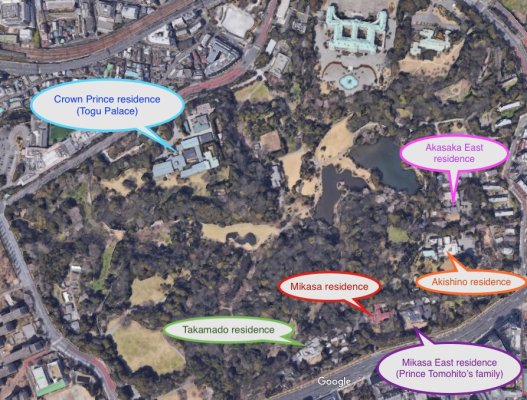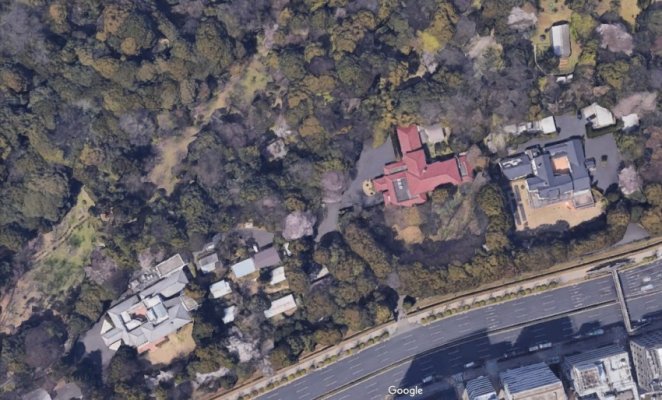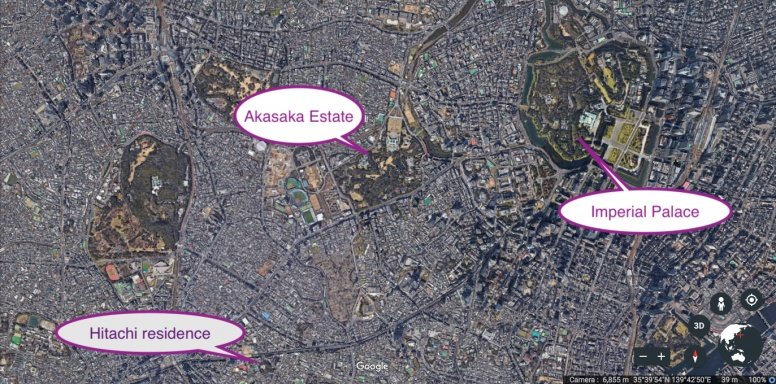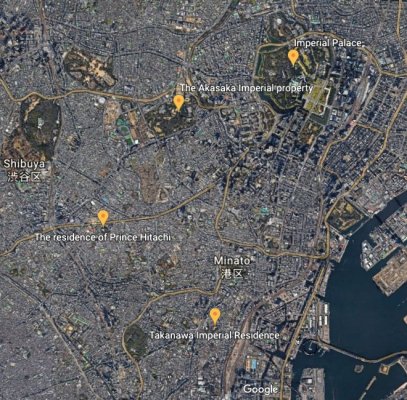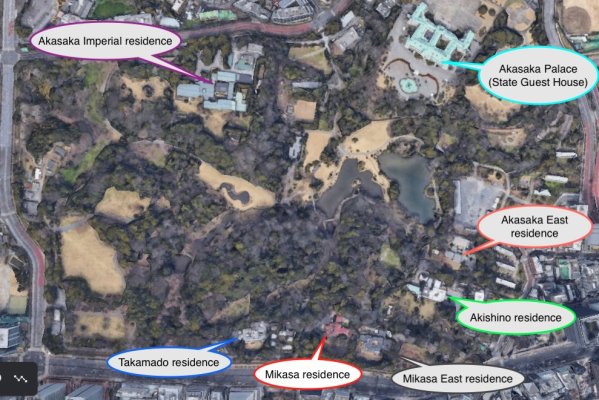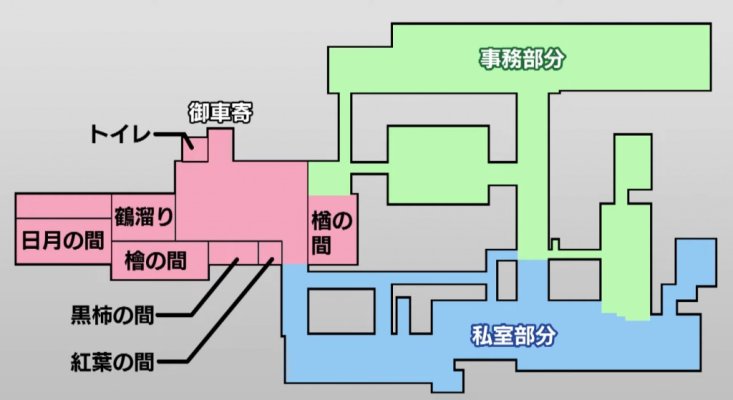July 1967 aerial view of Edo Castle and construction at the Imperial Palace
- starts south along the Sakurada moat
- Sakuradamon gate on right, camera approaches new palace under construction seen in the back left
- place called Nishinomaru in the Edo Castle era
- Fushimi Yagura can be seen in the center in front
- a palace was built when the Imperial court moved in the Meiji era and was burnt down during WWII. A new palace (Kyuden) is under construction
- double bridge on the left, proceeding north from the square in front of the Imperial palace to Sakashita Gate
- behind is the Imperial Household Agency. At that time, a temporary palace
- Fujimi Yagura, Edo Castle Sannomaru
- the stately building used to be the Privy Council, Otemon. This is the main gate of Edo Castle
- Imperial Household hospital, in the back is Edo Castle Ninomaru
- there used to be a moat between Sannomaru
- in front of the screen, there is a statue of Wake no Kiyomaro
- Hirakawamon gate appears from the right
- center at the back was where Ninomaru Palace used to be
- octagonal building seen from right is musical hall Tokagakudo to celebrate Empress Kojun’s 60th birthday and completed in 1966
- Edo Castle tower, Kitahanbashi Gate in foreground, Nishikibashi gate
- a palace on the right side of the castle tower, called Ooku and Nakaoku from the left
- until 3 years ago, there was Kuretakeryo, the residence of Emperor Showa's 4 daughters
- lotus pond moat seen in foreground
- Fujimi Yagura again
- When the Edo Shogunate was established, all daimyo, hatamoto, government officials, and select townspeople dressed in white and attended a celebration ceremony
- the stage, Honmaru of Edo Castle, the place where it was Ninomaruo and Sannomaru
- now called the Imperial Palace East Gardens, closed to the public at that time
- parts were opened the public in 1968
- inner circular route of the recently completed metropolitan expressway
- new palace under construction in the back of the screen
- Inuimon. Inui-dori extends from here, open for cherry blossom in spring and fall foliage in autumn
- Fukiage Gyoen
- Daimyo residences were located here around the beginning of the Edo period
- Chidorigafuchi
- continue to Hanzomon
=== 2022 aerial footage ===
- East Gardens, former Edo Castle
- Honmaru, Ninomaru, and Sannomaru
- Imperial Palace's Kyuden (green roofed building) with IHA building to the right
- Kyuden’s Chowaden for receptions, beyond is Seiden for important ceremonies
- right side is Houmeiden for banquets
- two bridges leading from square to palace’s left side
- main gate, stone bridge, iron bridge, double bridge
- Sakahita Gate leads to Imperial Household Agency
- Kikyomon Gate leads to the East Gardens on the right
- Sakuradamon on the left side of the screen



